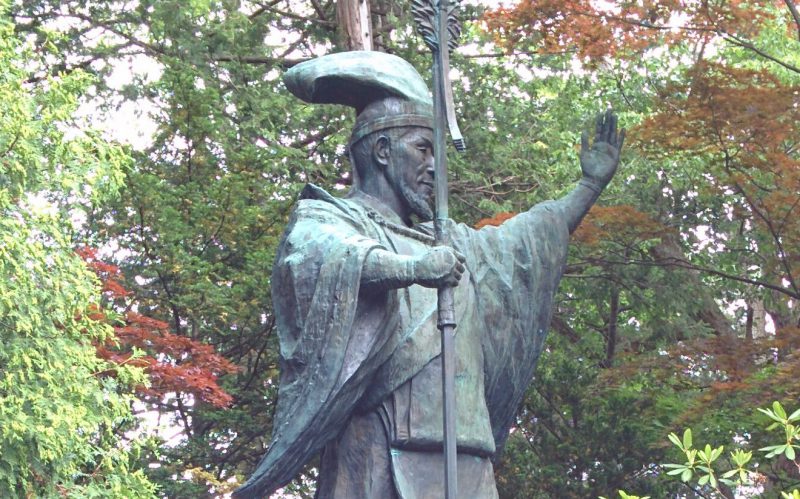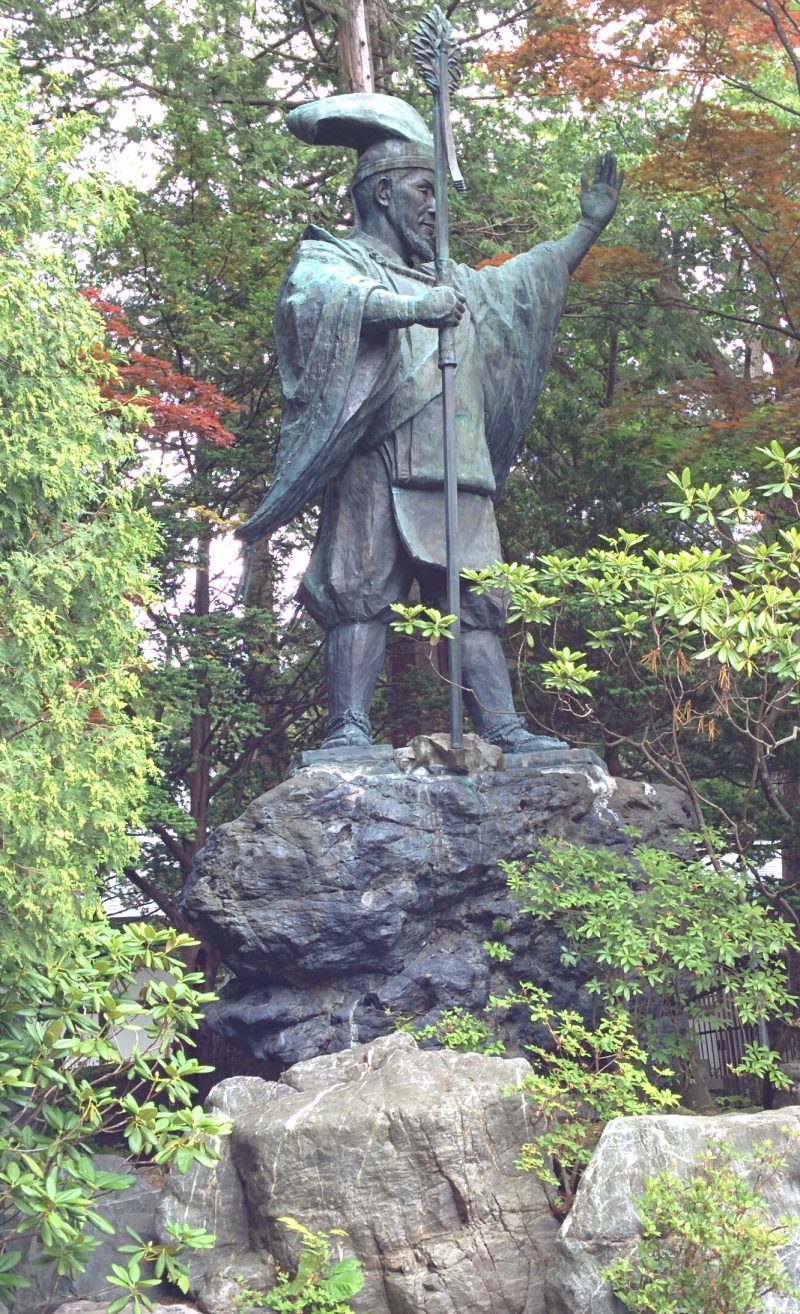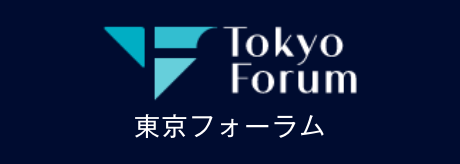The Two “Shimas”: Notes on Shima Yoshitake in Japanese Historical Memory – Part I

This is a two-part blog series
In Sapporo, the capital of the northern prefecture of Hokkaido, a four metre tall statue of Shima Yoshitake (島義勇) looms large over the Hokkaido Jingu Shrine (北海道神宮). A reprieve from the bustle of modern Sapporo -- a city of two million people -- the shrine is popular with tourists and locals alike. Every day thousands pass through its torii gate; many of them paying little attention to the colossus overhead. There, Shima, who was born in 1822 is dressed in Heian period (794-1185) clothing. Built on the 100th anniversary of his death in 1974, the statue celebrates Shima’s role in founding both the city of Sapporo and the shrine itself. Standing with a staff in his right hand and his left hand raised, for some visitors, this pose may evoke, however, not Shintoist but biblical images: Moses, his walking stick in hand, leading his people into the promised land.

The statue’s plaque reads:
On September 21st 1869, the Meiji Emperor dispatched the Kaitakushi [the Colonial Office] to Hokkaido under director Higashikuze Michitomi (東久世通禧). Following this, the imperial court selected the kami Ōkunitama, Ōnamuchi, and Sukunahikona as the guardian deities of colonization and entrusted the Kaitakushi with them. The Kaitakushi had established its temporary office in Hakodate. Shima, who had been ordered to establish its headquarters in Sapporo, personally carried altars for the three kami on his back along treacherous roads and entered Sapporo in October of that same year. He immediately decided that Maruyama would be the site on which the three kami would be enshrined and where a new grand shrine would be built. With this site as the starting point, he laid out the majestic streets of Sapporo on the model of ancient Heian period Kyoto. This bronze statue revives the gallant style of that period.
Far to the south in Saga Prefecture, Kyushu, another larger-than-life statue of Shima stands in the parkland alongside the outer ring of Saga Castle’s moat. The two and a half metre tall statue is turned to face the site of the castle, once the residence of Saga daimyō Nabeshima Naomasa (鍋島直正) and briefly Shima and Etō Shinpei (江藤新平)’s headquarters during their failed Saga Rebellion. Executed by government troops for his role in the rebellion and the castle itself burned, Shima’s place in both local historical memory is, if anything, somewhat ambiguous. While long since rehabilitated as one of Saga’s “Seven Wise Men ,” the statue’s placement, slightly removed from the the former Saga Domain’s centre of power, perhaps reflects this fraught place in memory. Indeed, the 2018 statue depicts a decidedly younger Shima, portrayed not as founding Sapporo in 1869 but as exploring Ezo (=Hokkaido) in 1858, 16 years before the rebellion.

The affixed plaque reads:
In commemoration of the 150th anniversary of the Meiji Restoration, [this statue] depicts the Saga retainer Shima Yoshitake who contributed to Hokkaido’s colonization as a founding colonial magistrate for the new Meiji government. Shima Yoshitake’s spirit of colonization and his burning “ambition” (kokorozashi 志) in making Sapporo, Hokkaido the greatest city in the world is revived today. And, so that this spirit will be inherited in perpetuity into the future, a statue of Shima Yoshitake is built on this ground.
Some 1,500 kilometres between the two statues -- one turned to Japan’s ancient past in Sapporo: a place known for snow festivals and beer, and the other turned to its future in subtropical, rural Saga: a place better known for porcelain and rice fields -- the two “Shimas” seem to inhabit different worlds. Indeed, they may seem to have little in common besides the figure which they are meant to represent. However, as I learned as both a researcher of Hokkaido’s history and as a four year resident of Shima’s hometown of Saga City, these two far flung places are deeply entangled in Japan’s modern history, connected through a third city, Nagasaki.
Imperial Visions
Administered as Japan’s so-called Western Gate (西門), Nagasaki was the only mainland port open to foreigners throughout much of the Tokugawa period (1603-1867). Foreign trade was not limited to Nagasaki, however. During this same period, the Japanese enclave of Matsumae in what is today southwest Hokkaido acted as Japan’s Northern Gate (北門), facilitating trade with the Ainu and, through them, the Qing Empire and other Asian mainlanders. Ezo-chi -- that is, self-governing Ainu territories -- was not considered Japanese territories and, alongside the Ryukyu Kingdom, was rarely included on Japanese maps. The bakufu, accordingly, did not consider the Ainu to be Japanese subjects but, instead, outlanders, living “beyond the pale” (kegai 化外) of the Shogun’s majestic rule. And, rather than a unified state, Ainu communities, or kotan, were then permanently settled, self-administering political units -- essentially microstates -- formally recognized by the bakufu.
Ezo-chi was, however, loosely under the suzerainty of the Hakodate-based Matsumae Domain for much of the Tokugawa period, with Matsumae trade outposts and military fortifications dotting the island’s coastline. While many Ainu -- especially those in Hokkaido’s inland region or on neighbouring islands -- lived largely outside of Japanese influence, many others, enabled by the Matsumae occupation, were forced into conditions of what amounted to chattle slavery by merchants and fishery owners.
By the late 18th/mid 19th century, this began to change. The expansion of Euro-American colonial empires into northeast Asia rattled Tokugawa officials. This looming threat first became clear in 1807 following raids against Japanese military and trade outposts located in Ainu territories by members of the Russian-American Company. Immediately after this incident, the bakufu seized control of Matsumae Domain and briefly put the otherwise autonomous kotan under direct Japanese administration. The attackers had acted on the orders of company director Nikolai Rezanov. And, while the Matsumae inability to repel a handful of Russian-American Company employees (let alone soldiers) was no doubt unnerving, what was particularly unsettling were signs posted by the Russians promising to “protect” the Ainu from the Japanese. This remained in memory until the early Meiji period, when the Kaitakushi under Nabeshima explicitly condemned the Matsumae exploitation of the Ainu on the grounds that the Russians would be able to use this to justify their own colonization.
At the time of the attacks, Saga and Fukuoka domain were tasked with defending Nagasaki and, by extension, were responsible for maintaining the sanctity of Japan’s borders writ large. As would-be Russian ambassador Rezanov had bitterly realized two years prior, foreign ships coming into Japanese waters to establish trade or diplomatic ties were routinely sent away from Edo and towards the southwestern port city: virtually as far from Edo as one could be while still on the mainland. There, they would wait, stripped of weapons and kept under armed guard, while their messages were relayed to Edo, only for their overtures of trade and diplomacy to be summarily rejected many, many months later. Nagasaki as Japan’s Western Gate was, then, something of a deterrent meant to discourage such attempts. However, as the Russian raids against Matsumae outposts were ostensibly revenge for Rezanov’s unfriendly reception, some Tokugawa officials -- and most certainly those in Saga -- were becoming increasingly aware that these “gates” strategically placed along a protective “wall” of domains was perhaps not enough to stop European gunboats.
As though to prove the point, just one year after the Russian raids in northern Ezo, the British ship HMS Phaeton entered Nagasaki harbour under a false Dutch flag and took the resident Dutch East Indian Company traders captive, demanding supplies in exchange for their safe return. Unable to mount a proper defence -- and with Nagasaki’s ageing cannons proving inoperable -- the Saga officials on site had little choice but to comply.
Even with the increasing frequency of Euro-American ships in Japanese waters, such attacks ceased and sovereignty over Ezo-chi was soon after returned to the Ainu kotan. Decades later, however, troubling news filtered into Nagasaki that Britain had defeated the once-feared Qing Empire in the First Opium War (1839-1842), annexing Hong Kong and forcing upon the Qing the first in a series of unequal treaties. Even as the bakufu attempted to suppress this news, a growing chorus of voices called for Japan to modernize its defenses against this growing threat.
By the time the Opium War had started, however, some in Saga had already begun to draw up plans to do exactly that. Nabeshima’s own tutor, Koga Dōan (古賀侗庵), had written on Japan’s coastal defence in detail in his 1838 book Overseas Speculations (海防臆測). Even before the shocking news of Britain’s victory, he recognized that it had become a formidable imperial power in East Asia and saw not only anti-Russian garrisons in Ainu territories but an overhaul of Japan’s coastal defences as essential for protecting the mainland. Not limited to this, however, he called for Japan to assertively join the ranks of the European empires in colonizing the Asia-Pacific. Also a small island country, he saw Japan as perfectly capable of replicating Britain’s experiences in empire-building by strengthening its naval capacity, expanding outward, and growing rich through trade.
Having absorbed Koga’s vision, in 1851, Naomasa -- also seemingly anticipating the American East Indian Squadron commander Commodore Matthew Perry’s forceful arrival in Edo Bay two years later -- wrote a poem chastizing the bakufu for its deeply conservative foreign policy while stating his own desire for imperial expansion:
Without voyaging overseas, how can we fulfill our ambitions?
I am indignant; we are without achievement in the barbarian countries.
When will we turn change the Christian countries completely
and let the majesty of our realm resonate?
It was that same year that Saga Domain began to use its new reverberatory furnaces to produce modern cannons. Throughout the following decade, It built progressively larger guns. Following Perry’s arrival, Nabeshima was, moreover, entrusted with not only Nagasaki but Edo’s own defence as well, with Saga cannons installed along Edo Bay. This, Naomasa believed, would be the first step in a series of reforms which would not only repel a Russian, British, or American colonial invasion of Japan but would lead to the creation of an armed force capable of outward expansion. This was to include what he believed to be as-yet uncolonized parts of Australia to the south as well as the formal colonization of Ainu territories to the north.
Australia, of course, would remain permanently out of reach. Ezo was, however, a far more promising prospect. Indeed, having again become the target of Russian colonial efforts in the 1850s, these territories had already attracted the intense scrutiny of bakufu officials, becoming a major source of anxiety not only in the late Tokugawa but early Meiji periods. Accordingly, both to explore previously unincorporated, unmapped Ainu territories and based on the understanding that the bakufu would soon partition these territories between prominent domains, daimyō from across Japan dispatched survey teams north. It was in this context that Naomasa first sent Shima to Hokkaido in 1858. There, he surveyed areas which might come under Saga’s control and, in the process, worked to build up trade networks and improve local defences. This foreign trade would, Nabeshima hoped, provide capital needed for Saga Domain to acquire its own fleet of steamships. These ships, in turn, would be put to use in its colonization of Ezo and other foreign territories in the years to come.
To be sure, Nabeshima was far from the only samurai who dreamt of empire. Yoshida Shōin (吉田松陰) famously envisioned a Japanese empire stretching from Kamchatka in the north to Korea in the west to Luzon in the south. Unlike Yoshida, however, Nabeshima was given a chance to make his vision a reality when, in 1869, he was chosen by the new Meiji government as the first director of the Kaitakushi. In this role, he would transform Hokkaido into an anti-Russian bulwark while expanding the island’s economic base. While never having set foot in Hokkaido and retiring soon after due to his rapidly failing health, Shima stayed on as a colonial magistrate under both the new director Higashikuze and his own successor, Kuroda Kiyotaka (黒田清隆).
Rising quickly through the ranks, he was appointed governor of neighbouring Akita Prefecture in 1872 and seemed poised for a long career as a statesman. However, disgruntled by the Meiji government’s refusal to launch a military expedition against Korea, Shima returned home to lead the doomed Saga Rebellion in 1874.








